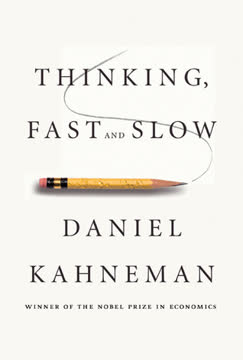मुख्य निष्कर्ष
1. आपसी संबंध: चुकाने की शक्तिशाली प्रवृत्ति
"नियम कहता है कि हमें उस व्यक्ति द्वारा दिए गए उपहारों का समान रूप से चुकाना चाहिए।"
गहराई से निहित सामाजिक मानदंड। आपसी संबंध का नियम मानव व्यवहार पर एक शक्तिशाली प्रभाव डालता है, जो सभी संस्कृतियों में गहराई से निहित है। यह हमें उपहारों, निमंत्रणों और रियायतों का चुकाना करने के लिए मजबूर करता है। यह नियम मानव सामाजिक विकास के लिए महत्वपूर्ण रहा है, जिससे श्रम का विभाजन, संसाधनों का आदान-प्रदान और आपसी निर्भरताओं का निर्माण संभव हुआ।
अनुपालन पेशेवरों द्वारा शोषित। विपणक और विक्रेता अक्सर इस नियम का शोषण करते हैं:
- मुफ्त नमूने या छोटे उपहार प्रदान करके
- बिना मांगे उपकार करके
- रियायतें देकर (जैसे, "अस्वीकृति-फिर वापसी" तकनीक)
चालाकी से बचाव। अपने आप को बचाने के लिए:
- पहचानें कि कब "उपहार" वास्तव में एक बिक्री रणनीति है
- केवल वही उपहार स्वीकार करें जो आप वास्तव में चाहते हैं
- उचित रूप से चुकाने के लिए तैयार रहें, न कि अत्यधिक
2. प्रतिबद्धता और स्थिरता: कार्यों को विश्वासों के साथ संरेखित करने की आवश्यकता
"एक बार जब हम कोई विकल्प चुन लेते हैं या एक स्थिति लेते हैं, तो हम उस प्रतिबद्धता के साथ लगातार व्यवहार करने के लिए व्यक्तिगत और अंतर-व्यक्तिगत दबाव का सामना करेंगे।"
संगति की मनोवैज्ञानिक आवश्यकता। मनुष्य अपने शब्दों, विश्वासों और कार्यों के साथ लगातार रहने की मजबूत इच्छा रखते हैं। यह प्रवृत्ति निम्नलिखित से उत्पन्न होती है:
- स्थिरता पर व्यक्तिगत और सांस्कृतिक मूल्य
- स्थापित स्थितियों को बनाए रखने की मानसिक दक्षता
अनुपालन तकनीकों में शोषण। विक्रेता और विपणक इस सिद्धांत का लाभ उठाते हैं:
- छोटे प्रारंभिक प्रतिबद्धताओं के लिए पूछकर
- सार्वजनिक घोषणाओं को प्रोत्साहित करके
- लिखित बयानों का उपयोग करके
फुट-इन-द-डोर तकनीक। यह पारंपरिक मनोवैज्ञानिक तकनीक इस प्रकार काम करती है:
- एक छोटा, आसानी से दिया जाने वाला उपकार मांगना
- इसके बाद एक बड़ा, संबंधित अनुरोध करना
- व्यक्ति की आवश्यकता पर निर्भर रहना कि वह लगातार दिखे
चालाकी से बचने के लिए, जानें कि कैसे छोटे प्रतिबद्धताएँ बड़े प्रतिबद्धताओं की ओर ले जा सकती हैं, और नई जानकारी मिलने पर अपनी स्थिति को फिर से मूल्यांकन करने के लिए तैयार रहें।
3. सामाजिक प्रमाण: अनिश्चित परिस्थितियों में भीड़ का अनुसरण करना
"हम किसी व्यवहार को सही मानते हैं जब हम देखते हैं कि अन्य लोग उसे कर रहे हैं।"
स्वचालित सामाजिक प्रभाव। अस्पष्ट परिस्थितियों में, लोग अक्सर उचित व्यवहार निर्धारित करने के लिए दूसरों के कार्यों की ओर देखते हैं। यह सिद्धांत विशेष रूप से शक्तिशाली होता है जब:
- स्थिति स्पष्ट या अनिश्चित होती है
- अन्य लोग हमारे समान प्रतीत होते हैं
विपणन में व्यापक रूप से शोषित। उदाहरणों में शामिल हैं:
- विज्ञापन जो "बिक्री में सर्वश्रेष्ठ" या "सबसे तेजी से बढ़ने वाला" होने का दावा करते हैं
- टीवी कॉमेडी में कैन्ड हंसी
- प्रशंसापत्र और सोशल मीडिया प्रभाव
बहुवचन अज्ञानता। यह घटना तब होती है जब एक समूह के लोग एक-दूसरे के व्यवहार को गलत समझते हैं, जिससे ऐसी स्थितियाँ बनती हैं जहाँ सभी लोग उस परंपरा का पालन करते हैं जिसे वे गलती से समूह सहमति मानते हैं।
अनुचित प्रभाव से बचने के लिए:
- सामाजिक संकेतों के परे वस्तुनिष्ठ जानकारी की तलाश करें
- कृत्रिम या हेरफेर किए गए सामाजिक प्रमाण के प्रति सतर्क रहें
- याद रखें कि लोकप्रियता हमेशा गुणवत्ता या सही होने का संकेत नहीं होती
4. पसंद: उन लोगों को हाँ कहने की प्रवृत्ति जिन्हें हम पसंद करते हैं
"हम में से कुछ को यह जानकर आश्चर्य नहीं होगा कि, सामान्यतः, हम उन लोगों के अनुरोधों पर हाँ कहना पसंद करते हैं जिन्हें हम जानते हैं और पसंद करते हैं।"
पसंद बढ़ाने वाले कारक। हम उन लोगों को पसंद करते हैं जो:
- शारीरिक रूप से आकर्षक होते हैं
- हमारे समान होते हैं
- हमारी प्रशंसा करते हैं
- आपसी लक्ष्यों की ओर सहयोग करते हैं
- सकारात्मक चीजों से जुड़े होते हैं
विपणन और बिक्री में शोषण। तकनीकों में शामिल हैं:
- आकर्षक प्रवक्ताओं का उपयोग करना
- ग्राहकों के साथ समानताओं पर जोर देना
- उत्पादों को पसंदीदा हस्तियों या सकारात्मक छवियों के साथ जोड़ना
टपरवेयर पार्टी का फेनोमेनन। यह बिक्री तकनीक पसंद के सिद्धांत का शानदार उपयोग करती है, जिसमें दोस्त दोस्तों को बेचते हैं, कई पसंद के कारकों को मिलाकर:
- परिचितता
- समानता
- सुखद सामाजिक घटना के साथ संबंध
चालाकी से बचने के लिए, एक प्रवर्तक के प्रति अपनी भावनाओं को उनके तर्क या उत्पाद के गुणों से अलग करें। विशेष रूप से सतर्क रहें जब आप किसी को बिक्री की स्थिति में असामान्य रूप से जल्दी या मजबूत पसंद करते हैं।
5. प्राधिकरण: विशेषज्ञों के प्रति स्वचालित समर्पण
"हम सभी के भीतर प्राधिकरण के प्रति एक गहरा कर्तव्यबोध होता है।"
सामाजिक प्रशिक्षण। बचपन से, हमें प्राधिकरण के व्यक्तियों का सम्मान और पालन करने के लिए सिखाया जाता है। यह प्रवृत्ति कई स्थितियों में हमारे लिए अच्छी होती है, लेकिन यह अंधी आज्ञाकारिता की ओर भी ले जा सकती है।
प्राधिकरण के प्रतीक। लोग अक्सर प्राधिकरण के प्रतीकों पर स्वचालित रूप से प्रतिक्रिया करते हैं, न कि वास्तविक विशेषज्ञता पर:
- शीर्षक (जैसे, डॉ., प्रोफेसर)
- कपड़े (जैसे, वर्दी, सूट)
- भव्यता (जैसे, लग्जरी कारें)
मिलग्राम का चौंकाने वाला प्रयोग। स्टेनली मिलग्राम के प्रसिद्ध अध्ययन ने प्राधिकृत प्राधिकरण की शक्ति को उजागर किया:
- 65% प्रतिभागियों ने खतरनाक इलेक्ट्रिक शॉक्स देने के निर्देशों का पालन किया
- प्रतिभागी अक्सर व्यक्तिगत संकट के बावजूद जारी रखते थे
अनुचित प्रभाव से बचने के लिए:
- पूछें: "क्या यह प्राधिकरण वास्तव में इस विशेष स्थिति में एक विशेषज्ञ है?"
- विचार करें: "हम इस विशेषज्ञ से कितनी सच्चाई की उम्मीद कर सकते हैं?"
- प्राधिकरण के प्रतीकों के उपयोग के प्रति सतर्क रहें जब वास्तविक विशेषज्ञता न हो
6. कमी: जो दुर्लभ या घटती उपलब्धता में है, उसकी कीमत
"जब अवसर कम उपलब्ध होते हैं, तो वे हमारे लिए अधिक मूल्यवान लगते हैं।"
मनोवैज्ञानिक प्रतिक्रिया। जब हमारे विकल्प या स्वतंत्रता सीमित होती है, तो हम अक्सर प्रतिबंधित विकल्प की अधिक इच्छा करते हैं। यह समझाता है कि:
- "सीमित समय के प्रस्ताव" प्रभावी क्यों होते हैं
- सेंसरशिप अक्सर सेंसर की गई जानकारी में रुचि बढ़ाती है
- वर्जित "फल" अधिक मीठा लगता है
हानि से बचने की प्रवृत्ति। लोग हानियों से बचने के लिए अधिक प्रेरित होते हैं बनिस्बत लाभ प्राप्त करने के। विपणक इसे इस तरह से शोषित करते हैं कि प्रस्तावों को इस तरह से प्रस्तुत किया जाए कि लोग हानि से बचें।
विपणन में कमी की तकनीकें:
- सीमित संख्या: "स्टॉक में केवल 5 बचे हैं!"
- समय सीमा: "प्रस्ताव आज रात मध्यरात्रि समाप्त होता है!"
- विशेष जानकारी: "आंतरिक ज्ञान जो जनता के लिए उपलब्ध नहीं है"
कमी की तकनीकों से बचने के लिए:
- पहचानें कि कमी से उत्पन्न भावनात्मक प्रतिक्रिया क्या है
- अपने आप से पूछें: "मैं इसे क्यों चाहता हूँ? इसके उपयोगिता के लिए या केवल इसलिए क्योंकि यह दुर्लभ है?"
- याद रखें कि कमी हमेशा बेहतर नहीं होती
7. प्रभाव के हथियार: जटिल दुनिया में स्वचालित ट्रिगर्स
"अक्सर जब हम किसी व्यक्ति या चीज़ के बारे में निर्णय लेते हैं, तो हम सभी प्रासंगिक उपलब्ध जानकारी का उपयोग नहीं करते। हम केवल एक, अत्यधिक प्रतिनिधि टुकड़े का उपयोग करते हैं।"
जानकारी का अधिभार। हमारी जटिल, तेज़-तर्रार दुनिया में, हम निर्णय लेने के लिए मानसिक शॉर्टकट पर अधिक निर्भर होते जा रहे हैं। ये शॉर्टकट आमतौर पर हमारे लिए अच्छे होते हैं लेकिन इनका शोषण भी किया जा सकता है।
प्रभाव के छह प्रमुख सिद्धांत:
- आपसी संबंध
- प्रतिबद्धता और स्थिरता
- सामाजिक प्रमाण
- पसंद
- प्राधिकरण
- कमी
नैतिक उपयोग बनाम शोषण। ये सिद्धांत स्वाभाविक रूप से हेरफेर करने वाले नहीं होते। ये समस्याग्रस्त हो जाते हैं जब:
- ट्रिगर को बनाया गया हो (जैसे, नकली प्रशंसापत्र)
- सिद्धांत का उपयोग लोगों को अविवेकपूर्ण निर्णयों की ओर धकेलने के लिए किया जाए
चालाकी से बचने के लिए:
- इन सिद्धांतों के प्रति जागरूक रहें और ये कैसे काम करते हैं
- ध्यान दें जब आप निर्णय लेने के लिए जल्दी या दबाव महसूस करते हैं
- तथ्यों और अपनी वास्तविक आवश्यकताओं पर ध्यान केंद्रित करें, न कि भावनात्मक ट्रिगर्स पर
हमारी जानकारी से भरपूर उम्र में, ये मानसिक शॉर्टकट अधिक आवश्यक होते जा रहे हैं। कुंजी है कि इनका उपयोग समझदारी से करें जबकि उनके संभावित दुरुपयोग के प्रति सतर्क रहें।
अंतिम अपडेट:
FAQ
What's Influence: Science and Practice about?
- Understanding Influence: The book delves into the psychology of compliance and persuasion, explaining how people can be influenced by social and psychological principles.
- Six Key Principles: Cialdini identifies six principles—reciprocation, commitment and consistency, social proof, liking, authority, and scarcity—that act as "weapons of influence."
- Practical Applications: It combines scientific research with real-world examples, making it relevant for personal and professional situations involving influence.
Why should I read Influence: Science and Practice?
- Scientific Foundation: The book is based on psychological research, offering evidence-based insights into human behavior and decision-making.
- Enhances Persuasion Skills: Understanding the principles can improve your ability to persuade others and recognize when you're being influenced.
- Real-Life Examples: Cialdini uses engaging anecdotes and case studies to make complex psychological concepts accessible and relatable.
What are the key takeaways of Influence: Science and Practice?
- Six Principles of Influence: The book emphasizes the importance of the six principles that govern human compliance and persuasion.
- Awareness of Manipulation: Readers learn to recognize manipulation and how to defend against undue influence.
- Practical Strategies: Cialdini provides actionable strategies for applying these principles in various contexts, from marketing to personal relationships.
What are the best quotes from Influence: Science and Practice and what do they mean?
- Automatic Behaviors: “Civilization advances by extending the number of operations we can perform without thinking about them.” This highlights the efficiency of automatic behaviors in shaping interactions.
- Early Decisions: “It is easier to resist at the beginning than at the end.” This emphasizes the importance of making decisions early, as commitment can lead to reluctance to change later.
- Reciprocation Rule: “The rule for reciprocation assures that, whether the fruit of our actions is sweet or bitter, we reap what we sow.” This reflects the idea that actions have consequences, often leading to reciprocation.
What is the principle of reciprocation in Influence: Science and Practice?
- Definition of Reciprocation: This principle states that we feel obligated to return favors or concessions given to us by others.
- Powerful Influence: It is so strong that it can lead individuals to comply with requests they would otherwise refuse.
- Uninvited Debts: The principle can be exploited by giving unsolicited favors, creating a sense of indebtedness in the recipient.
How does the commitment and consistency principle work in Influence: Science and Practice?
- Desire for Consistency: Once individuals make a commitment, they are driven to act in ways consistent with that commitment, even if it contradicts initial beliefs.
- Active and Public Commitments: Commitments made actively and publicly are more likely to influence future behavior, creating a stronger sense of obligation.
- Foot-in-the-Door Technique: This involves starting with a small request to gain compliance with a larger request later, leveraging the initial commitment.
What is social proof and how is it explained in Influence: Science and Practice?
- Definition of Social Proof: It is the tendency to look to others to determine correct behavior in a given situation.
- Influence of Similarity: The principle is most powerful when observing the behavior of similar people, as we are more likely to imitate their actions.
- Applications in Marketing: Advertisers use testimonials from ordinary people to create social proof, suggesting that if others like a product, it must be good.
How does the principle of liking influence compliance in Influence: Science and Practice?
- Factors Influencing Liking: People are more likely to comply with requests from those they like, influenced by factors like attractiveness, similarity, and compliments.
- Techniques to Increase Liking: Strategies like the Tupperware party model use social bonds and friendly interactions to increase sales.
- Impact of Familiarity: Increased familiarity with a person or product can lead to greater liking and compliance, often seen in advertising through repeated exposure.
What is the authority principle in Influence: Science and Practice?
- Definition of Authority: People are more likely to comply with requests from perceived legitimate authorities, rooted in socialization practices.
- Milgram's Experiment: Cialdini discusses how ordinary people could inflict harm when directed by an authority figure, showing authority's powerful influence.
- Symbols of Authority: Titles, uniforms, and trappings can trigger compliance even without genuine expertise, highlighting the need to be aware of authority cues.
How does scarcity influence decision-making in Influence: Science and Practice?
- Understanding Scarcity: People assign more value to opportunities perceived as less available, leading to increased desire and urgency.
- Limited-Number and Deadline Tactics: Techniques like informing customers of product scarcity or creating urgency effectively increase perceived value and compliance.
- Psychological Reactance: The loss of availability can trigger a desire for the item, leading to impulsive decisions driven by fear of missing out.
What is the rejection-then-retreat technique in Influence: Science and Practice?
- Definition of the Technique: Also known as the door-in-the-face technique, it involves making a large request likely to be refused, followed by a smaller, more reasonable request.
- Effectiveness: The smaller request is perceived as a concession, prompting the recipient to reciprocate with compliance.
- Research Evidence: Cialdini's studies show this method significantly increases compliance compared to making the smaller request alone.
How can I defend against the principles of influence discussed in Influence: Science and Practice?
- Awareness of Techniques: Understanding the principles allows individuals to recognize manipulation.
- Listening to Internal Signals: Pay attention to "stomach signs" (discomfort) and "heart-of-hearts signs" (genuine feelings) to gauge compliance.
- Reframing Requests: Redefine manipulative requests as compliance tactics rather than genuine favors, reducing pressure to comply.
समीक्षाएं
इन्फ्लुएंस को मुख्यतः सकारात्मक समीक्षाएँ मिली हैं, जिसमें इसे मनोविज्ञान के प्रभाव और व्यावहारिक अनुप्रयोगों के लिए सराहा गया है। पाठक इसकी अच्छी तरह से शोधित सामग्री, आकर्षक उदाहरणों और प्रभाव के छह प्रमुख सिद्धांतों की स्पष्ट व्याख्या की सराहना करते हैं। कुछ समीक्षक इसकी पुनरावृत्ति और पुरानी संदर्भों की आलोचना करते हैं। कई लोग इसे विपणन रणनीतियों को समझने और हेरफेर के खिलाफ बचाव करने के लिए मूल्यवान मानते हैं। यह पुस्तक अपने क्षेत्र में एक क्लासिक मानी जाती है, हालांकि कुछ समीक्षक इसे जटिल विषयों को अत्यधिक सरल बनाने का आरोप लगाते हैं। कुल मिलाकर, यह उन लोगों के लिए अनुशंसित है जो मनोविज्ञान, विपणन और व्यक्तिगत विकास में रुचि रखते हैं।
Similar Books

















